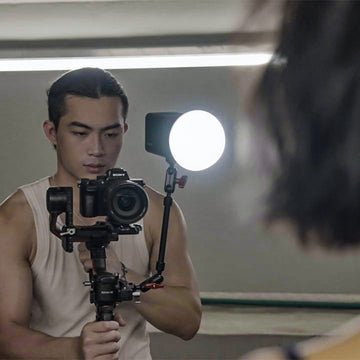Illuminate Your Subjects: A Guide to Studio Lighting Setups for Portraits
Corps
When it comes to capturing stunning portraits, lighting is key. The way you illuminate your subjects can make or break a photo, so it's essential to understand the different studio lighting setups available to you. In this guide, we'll explore various techniques and tips to help you master the art of lighting for portrait photography.

Understanding the Basics of Illuminate Your Subjects: A Guide to Studio Lighting Setups for Portraits
Before delving into specific lighting setups, it's important to grasp the fundamental concepts of lighting for portraits. Illuminate Your Subjects: A Guide to Studio Lighting Setups for Portraits involves the manipulation of light to create a desired mood, emphasize certain features, and minimize flaws. By understanding the interplay of light and shadow, photographers can sculpt their subjects and convey the intended message through their images.
Types of Illuminate Your Subjects: A Guide to Studio Lighting Setups for Portraits
There are several popular lighting setups used in portrait photography, each with its own unique characteristics and applications. The most common setups include Rembrandt lighting, butterfly lighting, loop lighting, and split lighting. Each of these setups creates a distinct look and feel, and understanding how to execute them effectively is crucial for any portrait photographer.
Rembrandt Lighting
Rembrandt lighting is characterized by a small, triangular highlight on the cheek of the subject, opposite a small catchlight in the eye. This setup creates a sense of drama and depth, making it ideal for creating moody, artistic portraits. By positioning the key light at a specific angle, photographers can achieve the signature Rembrandt lighting effect.
Butterfly Lighting
Butterfly lighting, also known as paramount lighting, is achieved by positioning the key light directly in front of the subject, slightly above eye level. This setup creates a symmetrical butterfly-shaped shadow under the nose, giving the portrait a classic, glamorous look. Butterfly lighting is often used in fashion and beauty photography to achieve a flattering, high-fashion aesthetic.
Loop Lighting
Loop lighting is characterized by a small, crescent-shaped shadow under the nose, created by the key light. This setup is versatile and flattering, making it suitable for a wide range of subjects and styles. Loop lighting is often used in traditional portrait photography, as it creates a soft, natural look that complements the subject's features.
Split Lighting
Split lighting involves illuminating only one side of the subject's face, leaving the other side in shadow. This setup creates a bold, dramatic look, making it ideal for creating striking, impactful portraits. Split lighting is often used in artistic and edgy portrait photography to convey a sense of mystery and intrigue.
Tips for Mastering Illuminate Your Subjects: A Guide to Studio Lighting Setups for Portraits
While understanding different lighting setups is essential, mastering the art of lighting for portraits requires practice, experimentation, and attention to detail. Here are a few tips to help you elevate your lighting skills:
- Pay attention to the direction, intensity, and quality of light to create the desired mood and atmosphere.
- Experiment with different modifiers, such as softboxes, umbrellas, and reflectors, to control and shape the light.
- Consider the subject's features and characteristics when choosing a lighting setup to accentuate their best qualities.
- Don't be afraid to break the rules and try unconventional lighting setups to create unique and compelling portraits.
Conclusion
Mastering the art of lighting for portraits is a continuous journey that requires a combination of technical knowledge, creativity, and intuition. By understanding the different lighting setups available and honing your skills through practice and experimentation, you can elevate your portrait photography to new heights. Whether you're aiming for classic, timeless portraits or bold, avant-garde images, the way you illuminate your subjects will play a crucial role in the final outcome.












commentaires